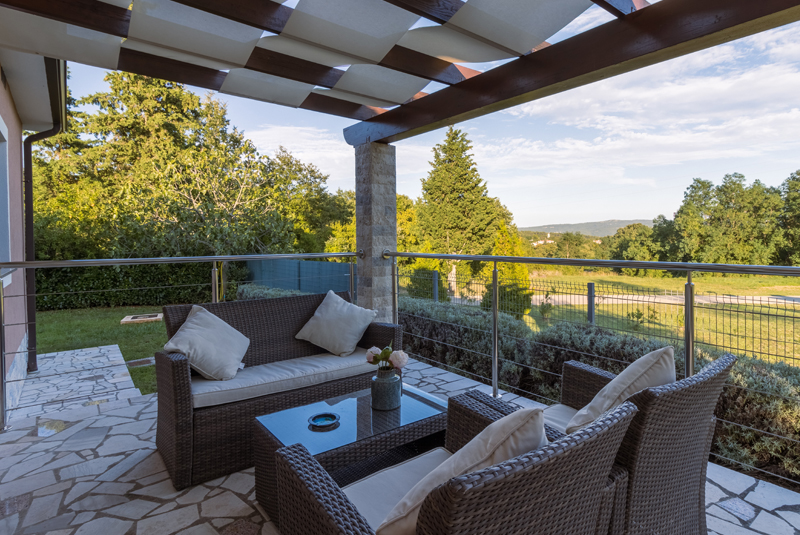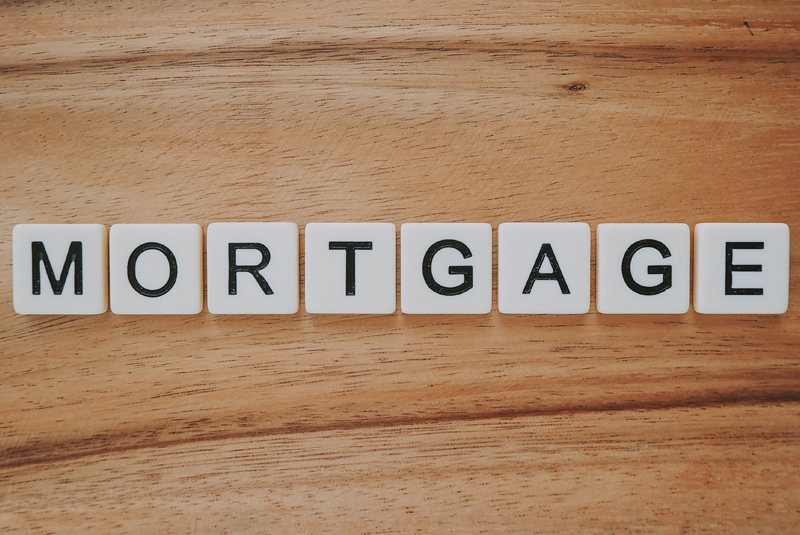December 12, 2022
How to Refinance Your Existing House to Make a Legal Basement Apartment or Garden Home
Share this article:

The serious housing crunch across Ontario and many parts of Canada has opened up opportunities for some homeowners, as well as some home seekers – specifically, the Ontario government has recently announced changes to some rather restrictive housing and building regulations, and tabled a new law – the More Homes Built Faster Act.
We would like to take a look at what’s happened, and how the proposed changes in this new law could benefit individuals and families on both ends of the spectrum – those seeking more affordable housing, and homeowners looking for ways to provide additional living space on their property. As well, let’s consider the option of mortgage refinancing to allow funding for some of these newly opened up opportunities for homeowners.

The More Homes Built Faster Act by the Ontario Government
We have all witnessed what’s happened to housing prices in the Greater Toronto Area, and across virtually the entire province over the last while: A relentless surge upward, coupled at times with a distinct lack of housing inventory for sale. The Ontario Government is attempting to address the situation with a piece of legislation – the More Homes Built Faster Act.
There are a number of components to the act, including some red tape cutting measures for approvals and applications. But one very interesting aspect of the proposed legislation is that it will allow for single dwelling owners to “densify” their own property in ways which municipalities may have, to this point, prohibited. The provincial act overrides some municipal restrictions, and will now allow more flexibility in areas such as:
- Basement apartments
- Garden houses (sometimes referred to as “granny suites”)
The intent is to spur creation of more homes and housing space, by cutting existing planning and application hurdles.
An additional feature of the Act is that it will allow for the development of triplexes and duplexes on lots designated single residential by local zoning laws.
But for now, let’s explore a bit further into the idea of modification of existing single residential houses to create more living spaces, via renovation and modification – a move designed to create additional affordable housing in high-priced real estate markets such as the Toronto area.

How Much Additional Living Space is Intended to Be Created Through the Act
By simplifying the requirements which local municipalities have in place, the government has some fairly aggressive targets, in terms of how much new living space should be created through the Act. The City of Toronto, for example, is expected to develop an additional 285,000 new homes through this initiative; the City of Mississauga – 120,000, and the City of Brampton – 113,000 new living spaces.
For homeowners, this initiative represents an opportunity to modify their existing property with additional rental units, which were not possible, legally speaking, in the past. This, in turn, will help create the end goal, which in the government’s words is a “broader mix of rental housing”. In addition to the three large municipalities already mentioned – Toronto, Mississauga, and Brampton – there will also be targets issued to another 26 of the largest towns and cities in the province.
In short, if you are a homeowner or property owner across the province, you now will have a chance to take advantage of the new legislation to make changes to your property, create the extra affordable housing spaces the province is seeking, and earn extra income from it, should you choose to rent it out.

One Way a Homeowner Can Take Advantage of the More Homes Built Faster Act – Refinancing Your Existing Mortgage
One attractive aspect of the More Homes Built Faster Act is that it is not just targeted at builders or developers. Individual homeowners will also be able to take advantage of the loosened rules in their municipality to make changes to their property previously not allowed, or else much more difficult to get approved. One issue for many, of course, will be accessing the money needed for such work. Renovations and modifications to any property, especially if they involve the full creation of a new living space such as a basement apartment, can be expensive. Consider that, you may have to make upgrades including:
- Electrical and wiring upgrades
- Additional insulation
- Plumbing installation, such as an entire new bathroom or kitchen space
- Smoke detectors, CO2 detectors and other safety requirements
- Additional outside entrances
- Garage or parking space
- Etc.
Keep in mind, though, the home you currently possess, even if there’s still a mortgage on it, will likely have equity you’ve built up in it. Different lenders have different policies and programs in place, so you will have to set up a meeting with your mortgage provider, discuss the opportunity of such a project, and whether they can assist with the refinancing of your existing mortgage.

Mortgage Refinancing Potential – What You Need to Do Beforehand
In order to see if you qualify for a refinancing of your existing mortgage to take advantage of the More Homes Built Faster Act, and create additional living space on your property – such as a basement apartment or “granny suite”, you will have to provide your lender with detailed plans and projected costs for your renovation or build. If you’re not a builder or contractor yourself, this means you will have to engage with professionals in this area to get accurate estimates of cost. Should there be major structural work involved, an engineer may need to be involved for proper drawings and specifications. It should be stressed that whatever you are choosing to build to create your apartment of additional living space for rental purposes, it must comply with all up-to-date building codes and safety standards. Plus, in these times of high heating and cooling costs, proper steps should be included to ensure energy efficiency, as it pertains to your project.
One primary concern, both for yourself and your lending institution, is the end result that whatever project you undertake, your property will go up in value. Increased property value is a major criterion your lender will assess before approving the refinancing of your existing mortgage with them. Again, this points to you having to do your homework and legwork up front, to determine what your project must entail, and how it will impact your property’s worth. Additionally, you should estimate what kind of income a new basement apartment, for example, can generate, on a monthly or yearly basis. Here’s where some variables may come into play. If your home currently has a basement which is already largely finished, with its own separate entrance, etc., and all that’s needed are some relatively minor upgrades, the overall cost of making the conversion to a fully habitable rental unit may be relatively low. On the other hand, starting “from scratch” with a totally unfinished space, and now existing separate entrance, will prove to be a far more expensive and complex undertaking. You should be well aware of the costs associated with your specific situation up front, and your bank or lending institution will want to be as well.
The end in mind should be that your renovation will generate enough ongoing income down the road to make it all worthwhile.

The Mortgage Refinancing Process
We’ve mentioned that financial institutions – the Big Banks, trusts, Credit Unions, etc. – will each have their own policies and programs regarding mortgage financing. Chances are, though, that your lender will be fairly well apprised of the More Homes Built Faster Act by the time you make an appointment to go see them.
The very simplest scenario for a mortgage refinance is that the lender will grant you access to the funds you need for your renovation or building project by adding them to your existing mortgage. This means your payment structure will have to change; either the monthly payment amount will go up, or the length of the mortgage term will be extended, or some combination of the two. What will determine how much additional funds you can access will be the property’s appraised value as it stands right now. The major advantage of going this route, as opposed to other means of financing your project – for example, on your credit card, or through a personal loan – is that you can extend payments over a longer period, and at the current mortgage rate you have. This can translate into a significant financial advantage, as mortgage rates tend to be lower than other types of credit interest rates.
Refinancing your mortgage to gain the additional funds needed for your project can allow you to borrow up to 80 percent of the value of your property, as it is currently appraised – minus the existing balance on your mortgage.

Keep a Contingency Plan for Your Building Project
It’s important to be mindful of the fact that, as with any type of project involving significant amounts of money, the actual time and cost may differ from the original plan. If this becomes the case with your renovation or build, you should plan for a contingency, such as a line of credit, or perhaps even your credit card, to get you over the finish line, just in case.

The More Homes Built Faster Act – What it Could Mean for You, Summarized
The bottom line is that with this new legislation, homeowners in Ontario who have wanted to take fullest advantage of the value of their property by adding additional living space to rent out, now have an avenue to pursue. The government is taking steps to make it easier than it ever was before, by pulling down barriers your local municipality and its regulations may have had in place. Plus, this time, the aim is not directed at the big-time developers and builders to create affordable housing – just about anyone will be able to take advantage of the More Homes Built Faster Act on a smaller scale – even if it’s just a basement apartment or “granny suite”. The Act is a recognition that there are relatively small actions which can be taken to address the large problem of the lack of affordable housing in the province.
We hope you have found this summary of how you might refinance your existing mortgage to create additional living space – and rental income – interesting and informative.
For more expert advice on mortgage refinancing, consider contacting a mortgage advisor today.
Get more homeowner tips
Subscribe to get more homeowner tips and advice delivered right to your inbox.


